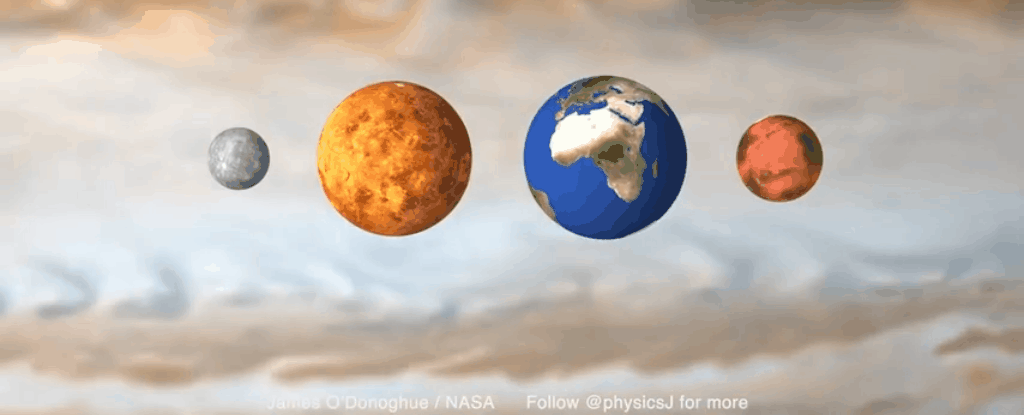Most models of the Solar System aren't completely accurate, and there's a good reason for that.
It's not laziness or scientific misunderstanding – an accurate, to-scale portrayal of the Solar System just wouldn't look that interesting. You have to zoom in to see what's going on.
James O'Donoghue, a planetary scientist at the Japanese space agency (JAXA) and formerly at NASA, recently ran into this problem. He created a series of animations that explore the difficulty of accurately depicting our Solar System.
"Think about the vastness of space long enough and chills are sent down the spine," O'Donoghue said on Twitter.
This series of his videos explains how size, distance, and space make Solar System models so tricky.
You might notice a note at the bottom of the video: "Sun not to scale."
O'Donoghue didn't show the Sun's actual size relative to the planets, because the Sun is so big that it would dominate the screen.
"There are few things that can be depicted to scale when talking about space," O'Donoghue said.
The super-simple model doesn't correctly show the planets' distances from the Sun, and from each other, either.
"I tucked in the orbits and kept the planets to relative scale," O'Donoghue explained on Twitter.
The unique movements of planets are another thing to consider. Each planet tilts differently on its axis and rotates at its own speed.
Even if a model shows the sun and every planet at the right size, speed, rotation, and tilt, one problem remains: distance.
In a video like O'Donoghue's simple model, the planets might not even fit into the screen if they were the correct distances from each other.
"It's hard to portray the Solar System's real size because space is mostly… space," O'Donoghue said.
(Even in this image, O'Donoghue said he had to move the sun a little to the left "to avoid issues.")
If you accurately portray that space in a Solar System model, there's not much to look at. The planets aren't even visible.
That's why most models of the Solar System aren't to scale.
At the end of this video, O'Donoghue makes all the planets and the Sun 1,000 times larger so that they're visible. The sun dominates the model, so he shrinks it back down and makes the planets 3,500 times larger than their real size.
The result still isn't as pretty as his first, simplified version.
"We always need to compromise because space is so swear-wording huge," O'Donoghue said.
This article was originally published by Business Insider.
More from Business Insider:
